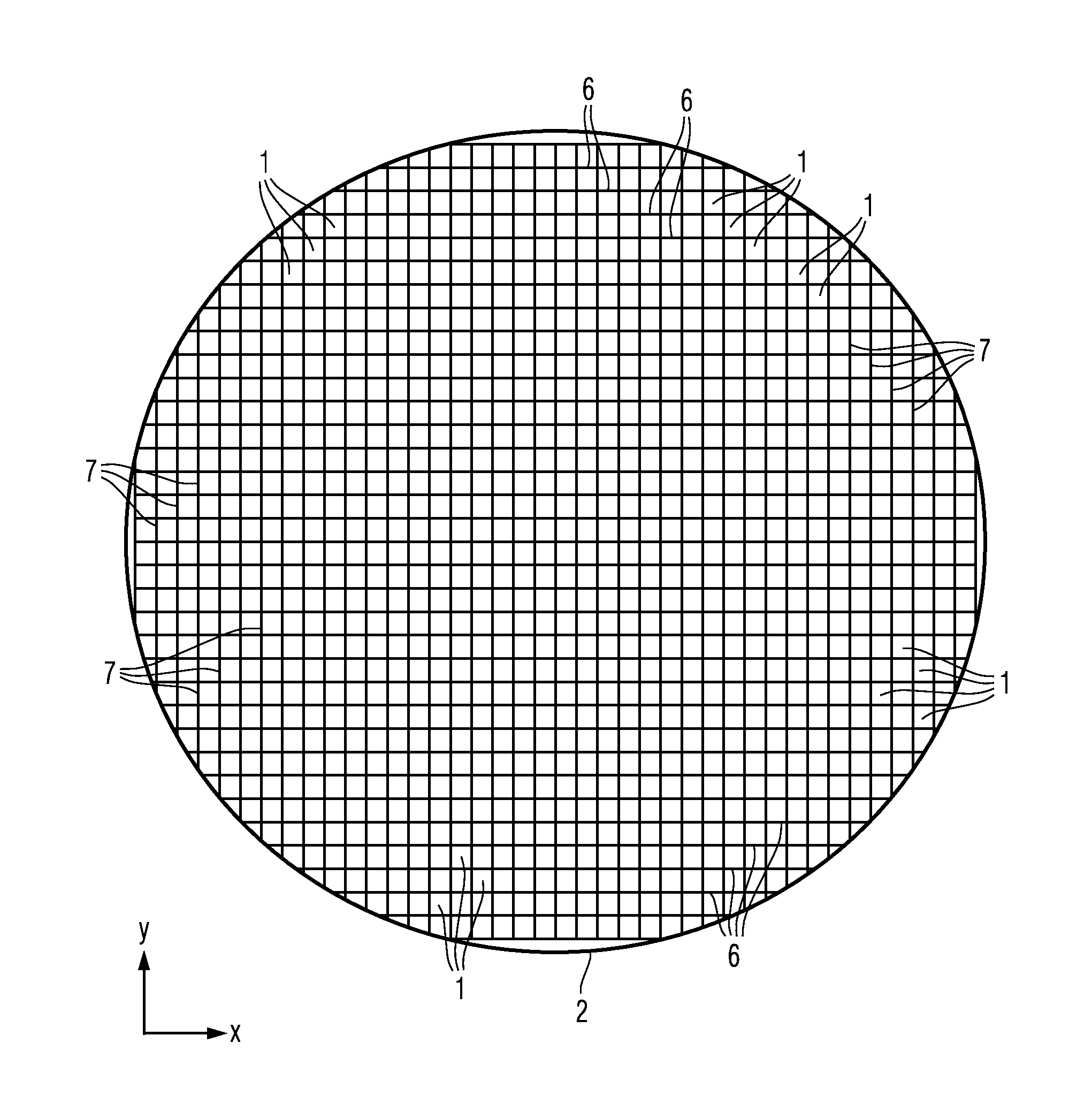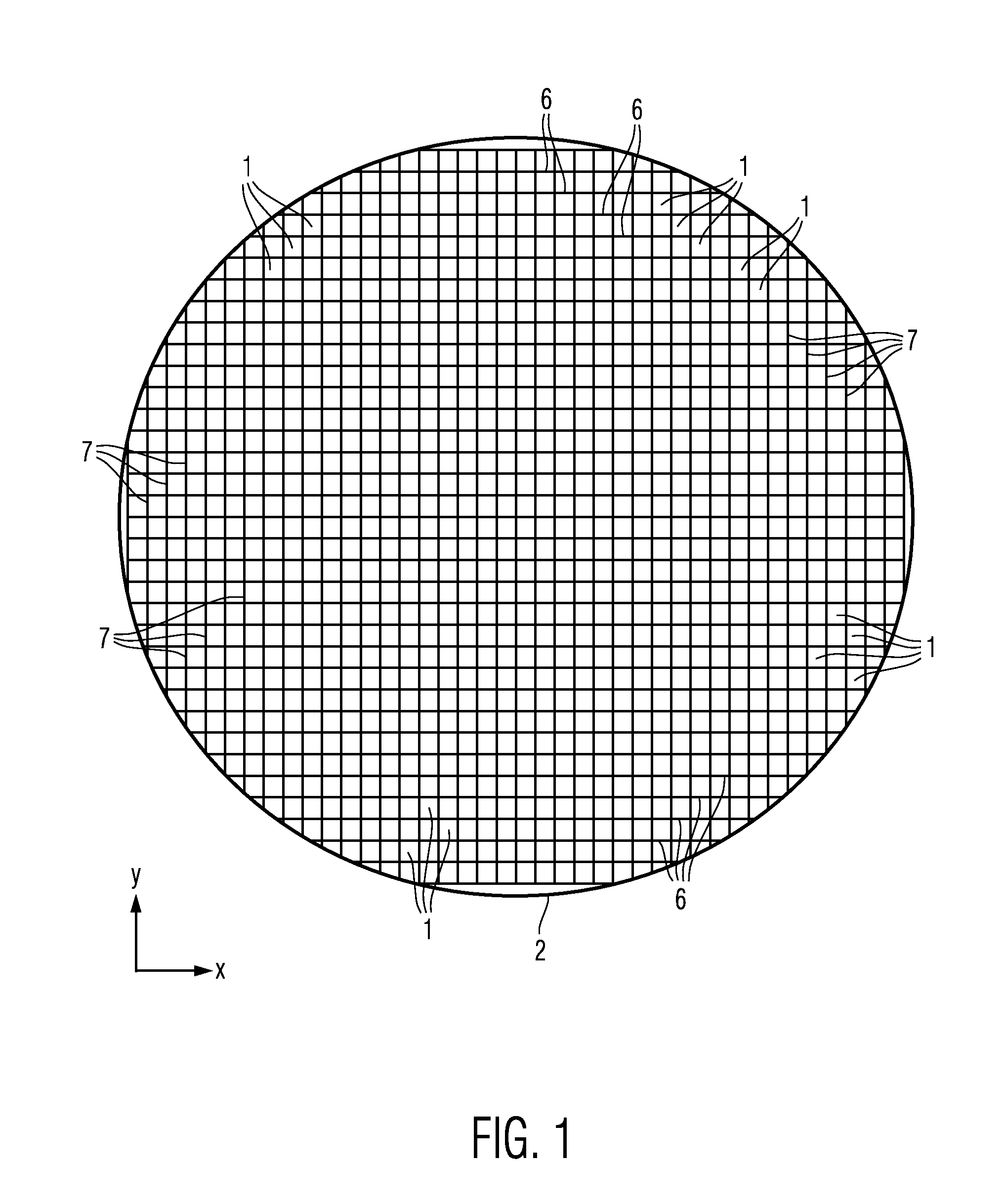Integrated Circuits On A Wafer and Method For Separating Integrated Circuits On A Wafer
a technology of integrated circuits and wafers, which is applied in the direction of electrical equipment, semiconductor devices, semiconductor/solid-state device details, etc., can solve the problems of missing saw lines, milky appearance, and inability to distinguish integrated circuits from saw lines, so as to achieve the effect of more reliable separation of integrated circuits formed thereon
- Summary
- Abstract
- Description
- Claims
- Application Information
AI Technical Summary
Benefits of technology
Problems solved by technology
Method used
Image
Examples
Embodiment Construction
[0037]FIG. 1 shows a top-view of a plurality of integrated circuits 1 on a semiconductor wafer and FIG. 2 shows a part of this top-view.
[0038]The integrated circuits 1 have been formed on a wafer substrate 2 as it is generally known per se in the art by forming a plurality of layers on the wafer substrate 2. For the exemplary embodiment, not only the integrated circuits 1 are formed on the wafer substrate 2, but also alignment marks 3. A top view and a cross section of one of the alignment marks 3 are shown in FIG. 3. The alignment marks 3 are utilized for aligning a separating device 18 used during a separation step during which the integrated circuits 1 on the wafer are separated into individual integrated circuits 1.
[0039]For the exemplary embodiment, the integrated circuits 1 and the alignment marks 3 have been formed on an upper wafer surface 4 of the wafer substrate 2 utilizing a reticle. When manufacturing the integrated circuits 1 on the wafer utilizing a reticle, an area of...
PUM
 Login to View More
Login to View More Abstract
Description
Claims
Application Information
 Login to View More
Login to View More - R&D
- Intellectual Property
- Life Sciences
- Materials
- Tech Scout
- Unparalleled Data Quality
- Higher Quality Content
- 60% Fewer Hallucinations
Browse by: Latest US Patents, China's latest patents, Technical Efficacy Thesaurus, Application Domain, Technology Topic, Popular Technical Reports.
© 2025 PatSnap. All rights reserved.Legal|Privacy policy|Modern Slavery Act Transparency Statement|Sitemap|About US| Contact US: help@patsnap.com



